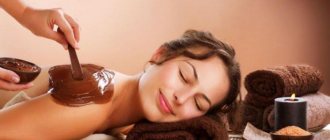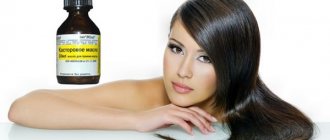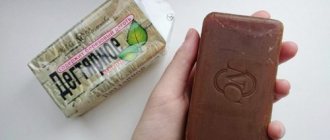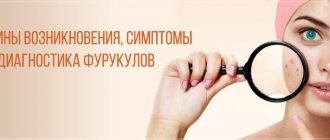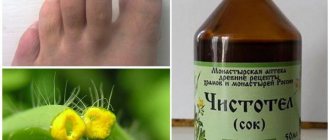Vinegar for warts is a popular folk method for getting rid of unaesthetic growths at home. The method is not suitable for all formations. Papillomavirus provokes the appearance of skin formations on human skin. Depending on the route of infection and the type of HPV, growths appear on the soles, hands, neck, and with sexual transmission of infection, genital warts appear on the genitals.
Advantages and disadvantages of vinegar treatment
Like any remedy, vinegar has its disadvantages and advantages. The benefits of the product include:
- availability;
- cheapness;
- efficiency;
- natural origin of the product.
The disadvantages of treatment are:
- risk of burns;
- duration of use;
- inconvenience of use;
- slight discomfort, possible unpleasant sensations during the procedure;
- impossibility of use in childhood;
- likelihood of relapse.
The substance should not be used to burn out growths on the face, mucous membranes, breasts and genital area.
The skin in these areas is sensitive and can react to small amounts of acid, causing the formation of scars, swelling, burning, and pain.
On the face
There are certain factors that contribute to the formation of warts on the face. These factors include:
- Improper or insufficient personal hygiene.
- Scratches and scratches.
- Using household items of an infected person.
- Disturbed hormonal levels during pregnancy or menopause.
- Weakened immune system.
- Presence of diabetes mellitus.
- Constant stress.
- Visiting a public place where there is high humidity, but hygiene is poor.
What to use: acid, essence or regular vinegar
The product is available in 3 forms:
- acetic acid, called glacial;
- vinegar essence - an aqueous solution of acid with a strength of 70-80 percent;
- table vinegar, an aqueous solution of acid in a concentration of 6-9%.
For culinary purposes in everyday life, housewives often use the table type of the substance. If only 70% essence is available, you can make it less concentrated by preparing an aqueous solution yourself:
- 1 to 7 will yield 9% vinegar;
- 1 to 11 will give you 6% vinegar;
- 1 to 20 will give you 3% vinegar.
Removing warts with 70% acetic acid threatens the patient with burns to the respiratory system and skin, poisoning, long rehabilitation, and infection of the resulting wound.
For medical purposes, it is necessary to use a table type of substance, which is not inferior in effectiveness to its predecessor. It is forbidden to simultaneously burn a wart with vinegar and other chemicals: they will react and cause unpredictable health consequences.
Precautionary measures
Using a strong cauterizing agent is not always the right decision. Possible consequences are:
- A severe burn to healthy skin if a drop of vinegar reaches not only the growth, but also the dermis around it;
- Scarring. Sometimes a large area is burned, which leads to tissue scarring as it heals. It looks especially bad if you remove growths on open areas of the body: face, hands;
- Burns of the respiratory system. Inhalation of acetic acid vapor can harm children, therefore treatment is prohibited for children under 3 years of age, and should be used with great caution in children 4-7 years of age.
And, of course, you should work with gloves, carefully monitor the components and protect your eyes and respiratory organs as much as possible from acetic acid fumes. For people with a low pain threshold, the options for eliminating warts with vinegar are not always suitable - treatment can cause not only pain symptoms, but also allergic reactions and shock.
Methods for removing warts with vinegar
To remove a wart with vinegar you will need:
- cotton swab or cotton ball;
- adhesive plaster;
- scissors;
- pipette;
- petrolatum;
- sterile bandage.
The burning method consists of applying a substance to the growth for several days, as a result of which cells infected with papillomavirus die. It is better to plan treatment of the affected area in the evening, so that you can go to bed and prevent the bandage from moving or falling off.
Removing growths begins with body hygiene. It is better to buy soap with an antibacterial effect, then wipe the skin dry, lubricate the area around the wart with baby fat cream or Vaseline to protect against possible burns. Drop a drop of solution from a pipette onto the growth or anoint it with a cotton swab dipped in liquid. Place a cotton pad on top and secure the bandage with a bandage. The minimum exposure time is 3 hours, it is recommended to leave the product overnight.
This remedy for warts can be used together with other ingredients: flour, garlic, onion, and alternated with celandine.
To protect the skin, use an adhesive plaster with a slot the size of the wart, which is glued around it.
As the substance eats away the growths, the patient may feel a slight burning sensation, which is not a bad sign. If the burning is unbearable, it means that the concentration has been exceeded, the skin should be rinsed in running water, prepare a weak solution and repeat the procedure. Burns of healthy tissue must be smeared with panthenol. Oils are contraindicated in the early period after burns.
After the first procedure, the following symptoms are observed, indicating the destruction of the wart: blackening, friability, reduction in size. Cauterization should last until the growth along with the root completely disappears.
When removing flat plantar warts, the feet should be thoroughly steamed in a solution of baking soda and the keratinized top layer of skin should be removed with pumice: papillomas on rough areas of the skin, old formations are more difficult to separate. After several applications of acid, you need to stick tape on the growth, press it tightly and pull it away sharply: the base of the wart will come out along with the tape.
The recess from the root of the growth must be protected from infection until the skin in the affected area has completely healed.
The wound is treated with iodine, bandaged or a sterile bandage is applied. Within 4 months, from the moment of growth of new young skin, it must be protected from ultraviolet radiation so as not to provoke the formation of nevi or pigmentation. If bacteria gets into the wound, antibiotics will be needed; the cleanliness of the treated surface must be monitored with special care.
On the penis
If warts appear in the groin area, this indicates the development of a virus. This type of neoplasm is commonly called genital warts. They appear, in most cases, due to unprotected sexual intercourse, as well as during oral sexual contact. You can also become infected with this dangerous infection by using the personal items of a person who is a carrier of the virus. Infection can be acquired in a public place: sauna, bathhouse, swimming pool. Small formations on the skin are localized on the head of the penis, as well as on its shaft. A wart can appear on the frenulum of the foreskin, and is less common on the scrotum.
Recipes for making vinegar products
Need advice from an experienced doctor?
Get a doctor's consultation online. Ask your question right now.
Ask a free question
Depending on the area of the lesion, the patient chooses a treatment that is convenient for him.
Vinegar + flour
Vinegar used with wart flour can cure extensive viral growths. An elastic dough is kneaded from wheat flour and vinegar (wine or apple vinegar), and the cake is kneaded to the size of the growths. Healthy skin is protected with a band-aid, Vaseline, and greasy cream. Before each use, prepare fresh dough. Apply until the formation begins to turn black and collapse. To remove warts you will need 5-6 lozenges, which are applied for 3-4 hours daily.
With garlic or onion
Garlic and onion are independent means of combating warts. If you use them with vinegar, the healing effect will increase several times. The recipe is as follows: a garlic bulb/clove is soaked in the table version of the substance for 3 hours without access to air, after which it is fixed on the affected area with a cut, avoiding healthy skin. It is better to do such compresses at night until the growths completely disappear.
Other
An effective treatment is an apple solution with Epsom salts.
The product is prepared as follows: the salt is dissolved in a solution in a ratio of 1:4. The affected area of skin is lubricated with a cotton swab dipped in the prepared product. The procedure is repeated 3-4 times a day until remission occurs. It is not necessary to apply a bandage.
Infuse lemon or orange zest in apple cider vinegar; you can use citrus peels. The process will take 3 days. Afterwards, the zest is squeezed out, the crusts are crushed and applied overnight to the sore spots until completely cured.
Half a lemon, soaked for a day in a table type product, is not inferior in effectiveness to other folk recipes. Pieces of fruit are tied to the sore spot overnight until the problem is eliminated.
On the body
The human papillomavirus can affect absolutely any area on the body, and this is observed for the same reason, which is the use of the patient’s household items, visiting public places with high humidity, and lack of personal hygiene. Promiscuous sexual intercourse, as well as possible hypothermia of the human body, can also be added to the reasons for the development of the virus. Due to the last factor, neoplasms most often appear on the arms and legs. If the virus appears in the armpits, the cause may be excessive sweating.
Important nuances when cauterizing
Cauterization of growths with vinegar must be carried out taking into account certain rules and restrictions that cannot be ignored. In order for the treatment to be effective, the following points must be adhered to:
- Use only high-quality vinegar from a trusted manufacturer. You should also pay attention to the shelf life of the product and do not use it after the expiration date.
- Perform the treatment in the evening, preferably before bedtime - this way the compress or bandage will not interfere with daily activities.
- Do not stop treatment if the lump darkens - this sign indicates the imminent disappearance of the wart.
- Strictly observe hygiene standards, regularly changing dressings. Otherwise, pathogenic bacteria may enter the wound, which will lead to the development of an inflammatory process.
- To avoid relapse, after completing the course of treatment, continue using the product for 2-3 days, reducing the concentration of the medicinal solution and halving the number of procedures.
Important!
If severe itching, burning or rashes occur during the procedure, you should avoid self-treatment with vinegar and consult a dermatologist.
Reviews
Reviews from people who have used vinegar to treat warts on their bodies prove that this remedy is quite effective in combating these unpleasant growths. However, this liquid must be used very carefully, since some patients developed burns on the skin during treatment. This is due to the fact that they did not protect the skin around the wart. For this reason, you need to be very careful when using the patch during the procedure of applying vinegar to the wart.
In conclusion, it is worth noting that you can get rid of warts on the body quite easily and quickly using ordinary vinegar. But during treatment, you must follow all the recommendations that were described in the article.
On the neck
The main source of the virus that provokes the formation of warts on the neck is also considered to be an infected carrier. During contact with it, growths may form on the skin. This picture is especially typical when wearing low-quality jewelry. In addition, there are other ways of infection, for example, those people who have diaper rash, abrasions, pimples on the neck, and weakened immunity should be considered at risk. The provoking factors in this case are colds, indigestion, taking antibiotics, and pregnancy.
Contraindications for use
The main contraindications to the use of vinegar to remove tumors at home are:
- individual intolerance to acetic acid;
- the presence of eczema, psoriasis or dermatitis;
- mechanical damage to the seal;
- increased skin sensitivity;
- age up to 12 years;
- period of pregnancy and lactation;
- rapid growth of papilloma;
- changes in the color, shape and structure of the wart;
- suppuration, bleeding or inflammation of the growth;
- degeneration of a benign tumor into a malignant tumor.



